 |
||
|
||
| ||
VIA Introduces AMOS-5001 Chassis Kit for Slim Em-ITX Embedded Systems Elpida Ramps Up Production of 30-nm DRAM D-Link Launches Wireless N 300 Gigabit Router DIR-651 White iPhone Arrives Tomorrow, iPad 2 This Week Apple Clarifies Location Data Issue VIA Introduces AMOS-5001 Chassis Kit for Slim Em-ITX Embedded Systems VIA Technologies today announced AMOS-5001, a specially designed chassis kit for Em-ITX form factor boards (e.g. EITX-3001) enabling rapid and easy assembly of fanless embedded system designs. 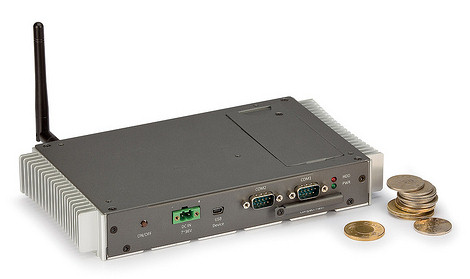 Measuring just 35.2 mm high and 231 mm wide, the ultra-compact VIA AMOS-5001 is slim enough to fit in even the most space-constrained environment. Systems built using VIA AMOS-5001 are also shock resistant up to 50G and can withstand temperatures from -20°C to 55°C. VIA AMOS-5001 chassis kit features an original modular design comprised of only four mechanical parts that ensures the easy integration of VIA EITX-3001 series mainboards. An optional 2.5-inch HDD storage subsystem chassis is also available.  VIA AMOS-5001 is available now and is targeted at embedded segments including medical, POI/POS, digital signage, kiosk, industrial and building automation, and gaming and surveillance applications. VIA AMOS-5001 chassis combines with the integrated heatsink design found on Em-ITX boards. The discrete aluminum heatsink has direct contact with the processor and chipset on reverse side of the board, forming a base for chassis assembly.  EITX-3001 motherboard specifications:
Source: VIA Technologies Elpida Ramps Up Production of 30-nm DRAM
The company completed development of advanced 30-nm process DRAM in September 2010 and started shipping 2-gigabit samples to major customers including the processor makers in December of the same year. Mass production was launched in January 2011 and the production scale has been gradually increasing. Elpida's 30nm process DRAM yields 45% more chips per wafer than 40-nm products and consumes at least 20% less power. With one of the smallest chip sizes and better power efficiency, 30-nm process DRAM helps slash the size and power consumption of a wide range of digital electronics devices, from lightweight battery-powered mobile devices such as smartphones and tablets, to computers and servers. Source: Elpida Memory D-Link Launches Wireless N 300 Gigabit Router DIR-651 D-Link today announced its new Wireless N 300 Gigabit Router DIR-651, offering increased performance and speed over previous generation 802.11g devices. The novelty supports the 802.11n technology, has four Gigabit ports, multiple intelligent antennas, and supports Intelligent Quality of Service (QoS). 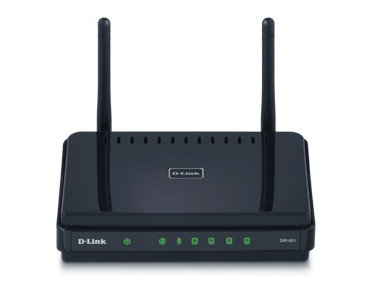 Featuring improved intelligent antenna technology, DIR-651 transmits multiple streams of data, enabling users to receive network connectivity in hard to reach places, especially in larger homes. With the addition of Intelligent Quality of Service (QoS), these data streams are separated to help organize and prioritize network traffic to give applications such as video streaming, gaming and VoIP calls priority over an activity such as web browsing. 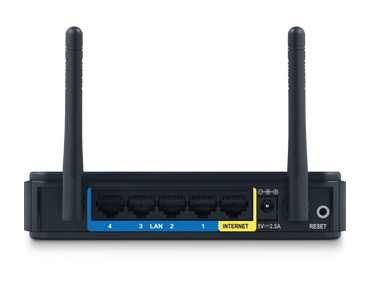 In addition to increased speed, the router also supports WPA and WPA2 security standards, as well as Wi-Fi Protected Setup (WPS) for push-button security and encryption from possible Internet threats. 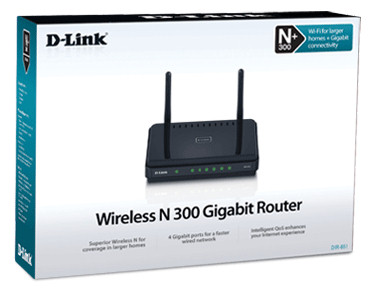 The DIR-651 Wireless N 300 Gigabit Router is now available for an MSRP of $89.99. Source: D-Link White iPhone Arrives Tomorrow, iPad 2 This Week Apple today announced that the white iPhone 4 will be available beginning tomorrow. In turn, iPad 2 will arrive in Japan on Thursday, April 28 and Hong Kong, Korea, Singapore and eight additional countries on Friday, April 29. White models of iPhone 4 will be available in Austria, Australia, Belgium, Canada, China, Czech Republic, Denmark, Finland, France, Germany, Hong Kong, Ireland, Italy, Japan, Luxembourg, Macau, Netherlands, New Zealand, Norway, Singapore, South Korea, Spain, Switzerland, Sweden, Taiwan, Thailand, UK and the US, beginning Thursday, April 28 and in many more countries around the world soon. 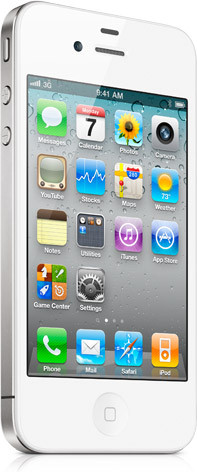 White iPhone 4 will be available for a suggested retail price of $199 (US) for the 16GB model and $299 (US) for the 32GB model with a new two year agreement through the Apple Store, at Apple's retail stores, AT&T and Verizon Wireless stores and select Apple Authorized Resellers. As stated above, iPad 2 will arrive in Japan on Thursday, April 28 and Hong Kong, Korea, Singapore and eight additional countries on Friday, April 29. It will be available at Apple retail stores at 9 a.m. local time, select Apple Authorized Resellers, and online through the Apple Store beginning at 1 a.m. Additionally, iPad 2 with Wi-Fi will be available in China beginning Friday, May 6. iPad 2 features is 33 percent thinner and up to 15 percent lighter than the original iPad, while maintaining the same 9.7-inch LED-backlit LCD screen.  iPad 2 features Apple's new dual-core A5 processor and now includes two cameras: a rear-facing camera that captures 720p HD video and a front-facing VGA camera for FaceTime and Photo Booth that will bring FaceTime to iPad users for the first time. Though it is thinner, lighter, faster and packed with new features, iPad 2 should still deliver up to 10 hours of battery life. iPad 2 with Wi-Fi will be available in Japan on April 28 and Hong Kong, India, Israel, Korea, Macau, Malaysia, Philippines, Singapore, South Africa, Turkey and UAE on April 29 for a suggested retail price of $499 (US) for the 16GB model, $599 (US) for the 32GB model, and $699 (US) for the 64GB model. iPad 2 with Wi-Fi + 3G will be available for a suggested retail price of $629 (US) for the 16GB model, $729 (US) for the 32GB model and $829 (US) for the 64GB model. iPad 2 with Wi-Fi will be available in China on May 6, and further international availability will be announced at a later date. iMovie and GarageBand for iPad apps are available for $4.99 (US) each from the App Store on iPad. The Smart Cover is available in a range of colors in polyurethane for $39 (US) or leather for $69 (US). Source: Apple Apple Clarifies Location Data Issue Apple posted a response to the suit of tracking user location initiated by two owners of iPad and iPhone who claimed that the company was secretly recording movements of iPhone and iPad users. Here it is. Apple would like to respond to the questions we have recently received about the gathering and use of location information by our devices. 1. Why is Apple tracking the location of my iPhone? Apple is not tracking the location of your iPhone. Apple has never done so and has no plans to ever do so. 2. Then why is everyone so concerned about this? Providing mobile users with fast and accurate location information while preserving their security and privacy has raised some very complex technical issues which are hard to communicate in a soundbite. Users are confused, partly because the creators of this new technology (including Apple) have not provided enough education about these issues to date. 3. Why is my iPhone logging my location? The iPhone is not logging your location. Rather, it's maintaining a database of Wi-Fi hotspots and cell towers around your current location, some of which may be located more than one hundred miles away from your iPhone, to help your iPhone rapidly and accurately calculate its location when requested. Calculating a phone's location using just GPS satellite data can take up to several minutes. iPhone can reduce this time to just a few seconds by using Wi-Fi hotspot and cell tower data to quickly find GPS satellites, and even triangulate its location using just Wi-Fi hotspot and cell tower data when GPS is not available (such as indoors or in basements). These calculations are performed live on the iPhone using a crowd-sourced database of Wi-Fi hotspot and cell tower data that is generated by tens of millions of iPhones sending the geo-tagged locations of nearby Wi-Fi hotspots and cell towers in an anonymous and encrypted form to Apple. 4. Is this crowd-sourced database stored on the iPhone? The entire crowd-sourced database is too big to store on an iPhone, so we download an appropriate subset (cache) onto each iPhone. This cache is protected but not encrypted, and is backed up in iTunes whenever you back up your iPhone. The backup is encrypted or not, depending on the user settings in iTunes. The location data that researchers are seeing on the iPhone is not the past or present location of the iPhone, but rather the locations of Wi-Fi hotspots and cell towers surrounding the iPhone's location, which can be more than one hundred miles away from the iPhone. We plan to cease backing up this cache in a software update coming soon (see Software Update section below). 5. Can Apple locate me based on my geo-tagged Wi-Fi hotspot and cell tower data? No. This data is sent to Apple in an anonymous and encrypted form. Apple cannot identify the source of this data. 6. People have identified up to a year's worth of location data being stored on the iPhone. Why does my iPhone need so much data in order to assist it in finding my location today? This data is not the iPhone's location data—it is a subset (cache) of the crowd-sourced Wi-Fi hotspot and cell tower database which is downloaded from Apple into the iPhone to assist the iPhone in rapidly and accurately calculating location. The reason the iPhone stores so much data is a bug we uncovered and plan to fix shortly (see Software Update section below). We don't think the iPhone needs to store more than seven days of this data. 7. When I turn off Location Services, why does my iPhone sometimes continue updating its Wi-Fi and cell tower data from Apple's crowd-sourced database? It shouldn't. This is a bug, which we plan to fix shortly (see Software Update section below). 8. What other location data is Apple collecting from the iPhone besides crowd-sourced Wi-Fi hotspot and cell tower data? Apple is now collecting anonymous traffic data to build a crowd-sourced traffic database with the goal of providing iPhone users an improved traffic service in the next couple of years. 9. Does Apple currently provide any data collected from iPhones to third parties? We provide anonymous crash logs from users that have opted in to third-party developers to help them debug their apps. Our iAds advertising system can use location as a factor in targeting ads. Location is not shared with any third party or ad unless the user explicitly approves giving the current location to the current ad (for example, to request the ad locate the Target store nearest them). 10. Does Apple believe that personal information security and privacy are important? Yes, we strongly do. For example, iPhone was the first to ask users to give their permission for each and every app that wanted to use location. Apple will continue to be one of the leaders in strengthening personal information security and privacy. Software Update Sometime in the next few weeks Apple will release a free iOS software update that:
In the next major iOS software release the cache will also be encrypted on the iPhone. Source: Apple
Write a comment below. No registration needed!
|
Platform · Video · Multimedia · Mobile · Other || About us & Privacy policy · Twitter · Facebook Copyright © Byrds Research & Publishing, Ltd., 1997–2011. All rights reserved. |